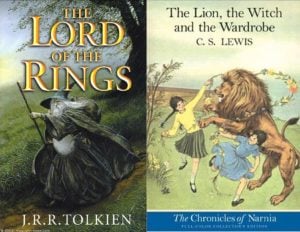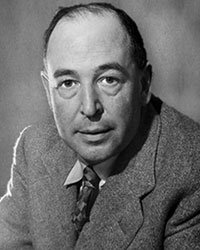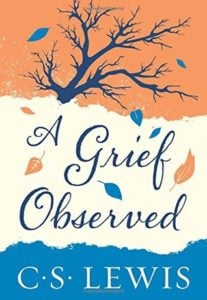Turkish Delight Narnia - All About The Candy

Lion, Witch, Wardrobe, Turkish Delight and C.S Lewis World War 2 left profound marks in Lewis’ life. Lewis and J.R.R. Tolkien decided to tell their story with their own style and imagination. Tolkien continued his Hobbit story with the series of The Lord of the Rings ”. Tolkien was a linguist. He created new languages spoken in Middle-earth. Throughout 1949 and 1954, Lewis described a fictitious war in Narnia in a non-existent country. He expressed the brutality of real-world war through the adventures of imaginary heroes. The sides of the war were good and evil. Lewis also included elements of religious science in which he specialized. To summarize the story in one sentence, children who magically cross to Narnia help a lion named Aslan to save the country. The most important feature that distinguishes the Chronicles of Narnia from other fantastic novels is the fact that it is a country in the center of novel instead of heroes. Lewis describes Narnia for seven volumes. Heroes change with volumes. The story of Narnia develops with them. The diaries include children who played important roles in the history of Narnia. The story was illustrated by Paul Baynes. Although the series has become one of the classics in the category of children’s novels, it attracts the attention of adults as well as children. The story uses religious themes and traces of Greek and Roman mythology. The effects of fairy tales from Ireland and England are seen. The metaphors in the story appeal to adults more. Even a reader, if you read the Narnia Chronicles over and over again at different ages, the taste you will get each time is different … The Chronicles of Narnia captivated many lives with its story. The adventure was not only in books: it was adapted to radio, theater and television. Hollywood also interested in this adventure as well. The Chronicles of Narnia was released in the cinema nearly half a century after it was written. In 2005, fans filled theaters. He saw the land of Narnia, which they created in their own dream world, this time on the screen. The adaptation of the books to the cinema also started a new debate. Theologian writer C. S. Lewis stated that he was based on the Jesus Christ in writing the lion character. What started the discussion was Liam Neeson’s explanation of the voice of the lion in the film. Neeson said the Lion character was based on Prophet Muhammad and Buddha. Neeson was charged with damaging Lewis’s legacy. The author’s former secretary, Walter Hooper, also participated in the debate. He said Lewis would be furious if he had heard these allegations. Lewis’s Narnia story about Prophet Jesus also noted that he wrote. He stressed that the series had nothing to do with Islam. In fact, the order of publication of the books and the chronological order of the story have always been the subject of discussion. The first published book is Lion, Witch and Wardrobe. After that, Prince Caspian, The Journey of the Dawn Star, Silver Chair, Horse and His Boy, The Magician’s Nephew and the Last Battle were published. When the books are ranked in terms of the course of the story, the Magician’s Nephew takes the first place. Chronological order, Lion, Witch and Wardrobe; Horse and His Boy; Prince Caspian; The Journey of the Dawn Star; The Silver Chair and the Last Battle. The first American publisher of the books numbered in order of publication. However, the series was reprinted in 1994 by Harper Collins. Lewis’s stepson, Douglas Gresham, advised the publisher that the series should be numbered in chronological order. To support this proposal, he cited the correspondence between his stepfather and a fan. In a 1957 letter, the reader said that he could not agree with his mother about the reading order of the books. Lewis said to his fan that the chronological sequence was more accurate. When he wrote his first book, he said he did not think he would turn it into a series. He even told that, he had planned to write every book as the last one, but he was told that he was wrong. The author said “Perhaps, it doesn’t really matter, in what order you read it”, and in fact he didn’t think the other series were written in the order in which they were read. While Harper Collins published the adult version, he wrote the book “The Magician’s Nephew” as the author wanted, although it was written years after the first book. However, this attitude of the publisher failed to convince Narnia fans. Enthusiasts of the book claimed that most of the magic came from the description in “The Lion, the Witch and the Wardrobe”. To them, it was not the emergence of the mystery, but the mystery of the Wardrobe. The first book to be read for this was not “The Magician’s Nephew”, but “Lion, Witch and Wardrobe”. This discussion never ended, but Hollywood began with films “The Lion, the Witch and the Wardrobe.. The film was directed by Andrew Adamson, who also directed Shrek. The 143-minute adventure featured Georgie Henley, Skandar Keynes, Anna Popplewell and Tilda Swinton. Those who love fantastic stories have shown great interest in this story they read and like in movie theaters. Spectators of all ages filled the theatres. In 2005, the film won the Academy Award for Best Makeup. The first film begins with the Pevensie family leaving their country for war and going to a safe place. Four brothers, who started living with a professor, was waiting for a big surprise in their new home. A hide-and-seek game opens the doors to Narnia. The friendship with the lion, the struggle with the white Witch Jadis and an endless adventure… Four brothers are looking for a way to save Narnia from ice and snow. Three years later, the second film of the series, Prince Caspian, was released. The series continued with the 2010 film “The Voyage of the Dawn Star”. However, this film was not as successful as the other films. Enthusiasts of the series are still waiting for the fourth film of the series, “Silver Chair”, although the release date is not yet clear. Netflix, a digital broadcasting platform, recently released news that will delight those who love the Chronicles of Narnia. Netflix purchased the story of all 7 books in the series. And began to prepare the series.
The Chronicles of Narnia build a fantastic world for its readers and viewers. It introduces them to forest nymphs, talking animals, sentors, satires, minators and many other fantastic creatures. The lead role in the story is not one of the heroes; location itself. Narnia, the country where White Witch is According to the prophecy, the protection of Narnia from snow and ice will be with 4 people. The Pevensie brothers play an important role in the battle between Queen Jadis and Lion, the founder of Narnia. In one of the crucial parts of the story, Aslan does not hesitate to sacrifice his life to save Edmund. Lion, killed by the witch, comes to life with the tears of Lucy and Susan. Queen Jadis is the dark side of the story. She knows the prophecies. And one day, on her way to Narnia, she meets Edmund. She persuades him to bring the other three brothers mentioned in the prophecy. Edmund is the most developed character in the story. In time, he turns to evil. The painful traces of war are perhaps best expressed through Edmund. Edmund, under the influence of magic, fulfills the demands of the White Witch. Queen Jadis’ goal is to kill the 4 brothers, whom she thinks may one day make the prophecy. She convinces Edmund to bring his brothers to the palace. What helps Jadis in this scene is the Turkish delight narnia with a magical flavor to Edmund. One of the notable points in the book is the elements of Turkish and Turkish culture. Lewis is known not only for Turkish cuisine but also for Turkish culture. The fact that the lion is defined as “aslan” in English is not an indication of this. Other Turkish words are heard throughout the adventure. Like tash, Ilgamuth Tarkaan. And the name of the White Queen is similar to the Turkish “cadi” word: Jadis. But one of the most delicious scenes of “The Lion, the Witch and the Wardrobe” is the moment when “White Witch” Jadis and Edmund meet. Edmund gets cold and the queen wraps him in her fur and tries to warm him. She’d like to offer him a hot drink and dessert. When she asked the little boy what he wanted to eat, the answer was “Is there a Turkish delight?”. Edmund eats the Turkish delight in a silver box. In fact, when the queen invites Edmund to her house with her brothers, she promises the young child rooms full of Turkish delight. For Turkish delight, it is mentioned in the book that “each piece was sweet and light until the middle.” According to readers, this depiction is a sign that the author has tasted delight.. In fact, Edmund’s choice of Turkish delight among the desserts he would want would cause “C. S. Lewis to remember this taste.” The Turkish delight, depicted in the book and displayed with all its flavor in the film, excites those who love the series. The recipe of the Turkish delight is on its own site. Those who try the Turkish delight recipes on some websites and social media continue to share their experiences. One of the factors that make Turkish delight so unique for the author is thought to be war. As is known, Lewis began to write his book in the years of World War II, in other words, in poverty. In other words, the period mentioned is the years when not even bread can be found. In this absence, Lewis is thought to have dreamed of a Turkish delight that he has tasted before or never forgotten. The history of Turkish delight goes back 600 years. The name Lokum is derived from the Arabic word “rahat-ul hulküm”. That means “sore throat relief”. Turkish delight is one of the traditional tastes of the Turks. It is already known as “Turkish Delight” by the whole world. Turkish delight first appeared in the 15th century. It is known that it took its place in the palaces after the 17th century. One of the sultans of the Ottoman Empire, Abdulhamit I, asked for a soft candy. On this request, sweet master Ali Muhittin Hacı Bekir replaces molasses with starch and refined sugar. Thus, approximately four centuries later, the Turkish delight reaches its present known composition. The most important feature that distinguishes Turkish Delight from soft candies common in many countries of the world is this composition. The taste cannot be imitated in any way. Even said gel sugars appeared during these mimic efforts. Ali Muhittin Hacı Bekir is also known as introducing Turkish delight to Europe. It is explained that the unique dessert is known as Turkish Delight in many countries of the world to Ali Muhittin Hacı Bekir’s a British customer. This traveler British presented Turkish Delight as “Turkish Delight” while serving Istanbul to Turkish guests. And since then, in most English-speaking countries, this soft candy has been referred to as “Turkish Delight”. It is known as “Lokoum” in France and Balkan countries. The recognition of Turkish delight in the US coincides with the period when Mehmed Muhiddin Efendi, son of Ali Muhittin Hacı Bekir, took over the business. A fair was held in Chicago in 1893 for the 400th anniversary of the discovery of the American continent. Mehmet Muhiddin Efendi produces and sells the first Turkish delight on the new continent Today, all over the world, Turkish delight is exported from Turkey. Plain, pistachio, double roasted, rose, gummy, almond, coconut, fruity, mint, chocolate covered and many other types of Turkish delight sweet taste in the mouth. Turkish delight is also known as a useful food as well as delicious. It is primarily an energy store. It has also been used in the treatment of some kidney diseases. In some villages of Anatolia, the ability to heal wounds was utilized. The Turkish delight has undoubtedly become known and curious by more and more people by The Chronicles of Narnia, a highly acclaimed book by C. S. Lewis. If you ever go to Turkey if you see a shop that sells unique taste of Turkish delight, we recommend trying it. Don’t doubt that you’ll want even more with an appetite as big as Edmund when you taste the delight. Would you like to get to know the author who brings this extraordinary world to readers? Clive Staples Lewis… He has produced important works in many fields including sci-fi and fantastic literature. The Irish writer was born on 29 November 1898 in a Protestant family in Belfast. His mother died when he was 10. A few weeks later, he began attending Wynyard School in England. He then attended boarding school at Campbell College. However, due to respiratory problems, he had to leave this school in December. The following year he enrolled at Malvern College. In December 1916 he was awarded a scholarship from Oxford. He soon joined the British Army. When he was in the army, the calendars were dated June 8, 1917. He was wounded in the Battle of Arras on 15 April 1918. Lewis’ first book, Spirits in Bondage, was published on May 20, 1919. Lewis had just come back from the military service and he was 21. He published it under the pseudonym Clive Hamilton. Lewis taught English Language and Literature at Oxford, and on May 11, 1926, he met J.R.R. Tolkien. In September of the same year, his book Dymer was published under the pseudonym of Clive Hamilton. Lewis completed this poetry book, which he started writing at the age of 17, in 9 years. Lewis, considered one of the intellectual giants of the 20th century, published his first novel, “Out of the Silent Planet,” of the Space Trilogy series on September 23, 1938. Then next books “The Problem of Pain” on October 18, 1940 and “Mere Christianity” in August 1941. Between 1942-1943 he published “The Screwtape Letters”, “Pubescast Broadcast Talks” based on BBC records, “Preface to Paradise Lost”, “The Abolition of Man” and “Christian Behavior” based on BBC records as well. The “Space Trilogy” series was completed with “Perelandra” (20 April 1943) and “That Hideous Strength” (16 August 1945). In the series where medieval mythology is told, the planets are also described with the best depictions ever made. This series has a good place in science fiction literature. St. On June 28, 1946, Andrews University awarded Lewis, one of the most influential writers of his time, to an honorary doctor of theology. On September 8, 1947, he appeared on the cover of Time magazine. Undoubtedly, Lewis’ s worldwide recognition was the Narnia Series. The first book in the series, The Lion, the Witch and the Wardrobe, was published on October 16, 1950. Series, Prince Caspian: The Return to Narnia, October 15, 1951, The Voyage of the Dawn Treader, September 15, 1952, The Dawn Star’s Journey, September 6, 1953, The Silver Chair, September 6 The Horse and His Boy, 1954, was completed with The Magician’s Nephew, May 2, 1955, and The Last Battle, 19 March 1956. Lewis marked the 1950s literature with this series. Lewis taught at the Department of English Literature at Oxford University until 1954, when he was elected President of Medieval and Renaissance Literature at Cambridge University. On September 29, 1961, the book “A Grief Observed” was published under the pseudonym N. W. Clerk. He has written more than thirty books and managed to reach a wide audience. C. Lewis died in Oxford on November 22, 1963. He left behind a whole new way of expression. His books continued to be published after his death. Letters to Malcolm on 27 January 1964; The Discarded Image was published on May 7, 1964. On June 9, 1966, his works in Medieval and Renaissance Literature met with his readers. C. S. Lewis’s books make clear references to religion. For example, the Lion in Narnia is the protector of the country. In this respect, the author describes Aslan as “an alternative version of Jesus, who may emerge in an alternative universe.” “In the beginning there was nothing about Christianity in the books, that element was spontaneously involved in the story,” he said. The series received serious criticism for its elements of Paganism. C. S. Lewis was a writer who frequently corresponded with listeners and readers of his radio programs. After the publication of the diaries of Narnia, children were among those who wrote to the author. One of those letters brought with it a seminal answer for young writers. An American female student wrote in 1959 asking Lewis for advice on writing. Famous author, 8 items listed the priorities. It is very hard to give any general advice about writing. Here’s my attempt. Irish writer and academician Clive Staples Lewis (C. S. Lewis) began to tell a brand new tale years ago: The Chronicles of Narnia. This 7-book fantasy novel series has been so popular that it has been translated into more than 40 languages. He has sold over 100 million copies all over the world. Adapted to theater, cinema, radio. It has been described by many as ‘the fantastic world in which mythology is adapted to the present day ’.
Irish writer and academician Clive Staples Lewis (C. S. Lewis) began to tell a brand new tale years ago: The Chronicles of Narnia. This 7-book fantasy novel series has been so popular that it has been translated into more than 40 languages. He has sold over 100 million copies all over the world. Adapted to theater, cinema, radio. It has been described by many as ‘the fantastic world in which mythology is adapted to the present day ’.The Movie
The Book
Magical World of Narnia
The Prophecies of Narnia
 condemned to live in an endless winter due to the ice potion, is looking for her salvation.
condemned to live in an endless winter due to the ice potion, is looking for her salvation.
Narnia and The Turkish Culture
Turkish delight has been consumed for hundreds of years, especially in Europe and around the world. According to research, Europeans meet Turkish delight dates back to the 1800s. At that time, Europeans who wanted to produce this unique dessert themselves could not reach the flavor they wanted. They imported Turkish delight from the Ottoman Empire for many years. As this is costly, Turkish delight can only be eaten by the rich in Europe.
The Birth of Delicious Dessert
Turkish Delight in the World
About the Author of Narnia

Author’s Other Books







